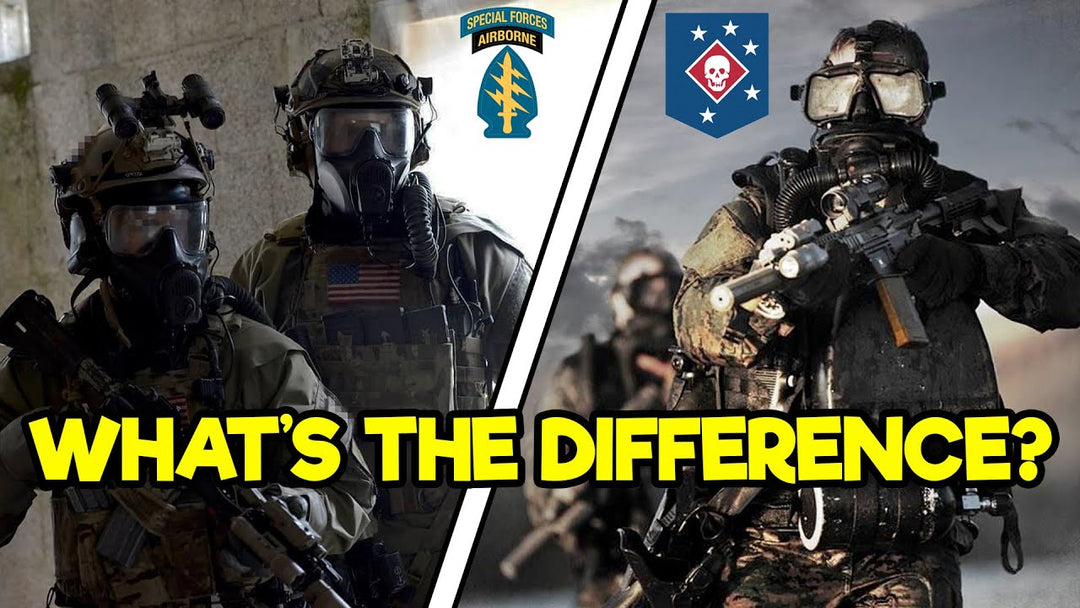What is the French Foreign Legion? (Inside the Unit of Outlaws & Exiles)

Can a soldier be loyal when defending another country’s flag? An iconic military unit of the French Army has the answer. The French Foreign Legion found a way to transform volunteers from all backgrounds and ways of life, including deserters and people with criminal records, into warriors that have defended French interests overseas for almost 200 years. Its members come from all around the world. They join seeking adventure, a fresh start, or the challenge of becoming part of a legendary force.
As legionnaires, they partake in extremely dangerous and controversial missions throughout the world, where the level of threat and political sensitivities are too high. And in their journey, they gained worldwide recognition as some of the most honorable soldiers.
With that said, what exactly does the French Foreign Legion do? How does it operate today? What makes the legionnaires so special? And how did a group that was originally filled with foreign outlaws become one of the most respected and romanticized military corps in history? Keep reading and we’re going to answer all those questions for you and much more.
TABLE OF CONTENTS
FRENCH FOREIGN LEGION: HISTORY
FRENCH FOREIGN LEGION: THE LEGIONNAIRE
FRENCH FOREIGN LEGION: REGIONS OF OPERATION AND MISSION
FRENCH FOREIGN LEGION: SALARY AND BENEFITS
FRENCH FOREIGN LEGION: THE CULTURE AND TRADITION
FRENCH FOREIGN LEGION: TRAINING
FRENCH FOREIGN LEGION: WHO CAN BECOME A LEGIONNAIRE?
FRENCH FOREIGN LEGION: SELECTION
FRENCH FOREIGN LEGION: CONCLUSION
FRENCH FOREIGN LEGION: HISTORY

Today, the French Foreign Legion is a renowned assault troop within the French Army, but that’s not the first thing people think when they hear their name or see their distinctive white cap. No. They think about fugitives and deserters, about songs, camaraderie, and heroic missions in exotic lands. You may have heard some of the tales about the French Foreign Legion already. Some are dark, others are ridiculous, and more than a few are true.
All of the myths and stories surrounding the French Foreign Legion and its members are fuelled by the Legion’s long, rich history. Not many military units in the world can confidently say they have 190 years of continuous combat experience. And it all started with an excess of unemployed foreigners and a helpless emperor.
Imagine this: You are the ruler of an empire that’s suffering the consequences of 200 years of revolutions and civil wars. The guys preceding you were overthrown, executed, or exiled. Your foreign enemies are expanding while you are losing ground. You don’t trust your citizens. After all, they were the ones who made a mess of your country. The streets of your capital city are flooded with unemployed veterans, deserters, refugees, mercenaries, and criminals. Most of them are foreign. You are alone. You need soldiers who are willing to follow your orders.
This is what was going on with King Luis-Phillippe in 1831. The French army was close to non-existent because France had become dependent on mercenaries for quite some time, and the king was facing a loss of power and territories. So, at the suggestion of his Minister of War, he decided to recruit volunteers from the foreigners that swamped France and send them far away to protect and expand the French colonies. That’s how the French Foreign Legion was established.
First, the Legion helped secure the conquest of Algeria in northern Africa, where they set up a base. Then, they were sent to rough-up the rival empire of Spain, by fueling an internal power struggle. And then, the Legion helped expand France’s frontiers and influence in all corners of the World. Nobody was safe: Italy, Mexico, Morocco, Lebanon, Indochina, you name it. They all got a bloody taste of the Legion.
Over decades, the Legion grew and became better and more famous. At its highest point, they reached 45,000 legionnaires. But the best, most epic moments in the Legion’s history have been when all odds are against a small group of legionnaires, like in the battle of Camarón, when 65 legionnaires refused to surrender against 3000 Mexican loyalists. Just like the movie 300, but with way more clothing. In the end, only the captain and two legionnaires were left holding their positions with fixed bayonets after running out of ammo. When they were finally captured, the commander of the Mexican army couldn’t believe there were only 3 legionnaires left, famously saying, “These are not men, they are demons!”.
FRENCH FOREIGN LEGION: THE LEGIONNAIRE

Demons indeed. What makes the Legion truly special is its members: their unique background, their belief in mindless sacrifice, their profound sense of camaraderie, their discipline, and their training.
The French Foreign Legion famously accepts volunteers from all backgrounds and ways of life, including deserters and people with a criminal record. The Legion doesn’t ask too many questions, doesn’t judge, and believes in second chances in life. When you join them, you leave your past identity behind. You will be given a different name, a new date of birth, and a European social security number. And if you’re French, you’re expected to change your nationality to that of another French-speaking country, such as Belgium or Switzerland. It’s truly a new beginning for those who are looking for one, and most recruits are.
The motivation to join the Legion varies: some want a fresh start, some seek adventure, and others want money. For those of you who want to get a fresh start, you should know that at the end of the first year, a Legionnaire can choose to either keep using his new identity or reclaim his old name. Moreover, if you’re a foreign-born legionnaire, you can become a French citizen after 3 years of service. You can also become “French by spilled blood,” which means you can apply right after being wounded during a battle.
FRENCH FOREIGN LEGION: REGIONS OF OPERATION AND MISSION

Those who join seeking adventure will find it. The Legion is currently deployed in places like Mali in west Africa, Lebanon in the Middle East, or French Guiana in South America. They undertake counterinsurgency operations, conventional warfare, and peacekeeping missions. They can end up in a desert fighting terrorist groups with NATO allies one day, and destroying illegal gold mining camps in the middle of a tropical jungle the next. Right now, the Legion helps fight jihadist and rebel forces in the African Sahel area, protects the UN mission in Lebanon, combats illegal mining groups while protecting a Space Center in French Guiana, and supports counter-terrorism on the French mainland.
When you’re part of one of the toughest units in the world, you’ll earn the respect of other hardened expeditionary units. You don’t get charged with the protection of US forces’ left flank in the middle of Operation Desert Storm by just staying at home and sipping wine. During a year in a combat unit, legionnaires will spend a minimum of 4 months on field service, 2 months on counter-terrorism in France, 4 months on training or in the regiment, and 2 months on holiday. There is time for adventure and time for rest.
FRENCH FOREIGN LEGION: SALARY AND BENEFITS

Last, some just go and join the Legion for the money. A single man living in the barracks will earn an initial minimum salary of €1,348 per month as of 2023, the same as soldiers from other branches of the French military. This rises to a monthly wage of €3,423 during deployment. Plus, they have many bonuses according to their rank and qualifications. Benefits also include free housing, clothing, food, and medical care. They get 20 paid vacation days during the first year of service, 25 during the second, and from the third year onward, 45 paid vacation days. And, after 17 and a half years of honorable service, they can start collecting a regular retirement pension. Those are meaningful benefits if you come from a country where there are fewer opportunities or no social welfare.
The payment for your services doesn’t turn a legionnaire from a professional soldier into a foreign mercenary, which is a common misconception. Unlike mercenaries, legionnaires are a permanent part of the French Army, integrated into the regular military structure, and follow orders of the French government. Mercenaries, on the other hand, may work for various employers, such as private entities, and usually operate on a temporary basis. But if you just want to become rich, save yourself some pain: you’ll probably do better by becoming a mercenary and not a legionnaire. However, it must be said that both mercenaries and legionnaires have historically been treated as expendables.
FRENCH FOREIGN LEGION: THE CULTURE AND TRADITION

More than 35,000 legionnaires have died in battle since the Legion was established. One of their past Generals famously screamed at them before a battle “Legionnaires! You are soldiers meant to die, and I am sending you to the place where you can do it.” This idea of being meant to die is fundamental to understanding the Legionnaires’ culture, or as they famously call it, esprit de corps, or sense of identity and pride. A Legionnaire knows he is a professional soldier: they don’t give a damn what they’re fighting for; it's their job. And their job is their life—most of the time their new and only life, their escape, their second chance. They’ve got nothing else. That’s why they fight so well and die so well.
The Legion’s motto is “Legio Patria Nostra”, or “the Legion is our Fatherland”. In other words, the Legion is your home and what you fight to protect. They don’t have to serve or even care for France. While the rest of the French Army swears to “Honor and Fatherland," the Legionnaires are the only ones to say “Honor and Fidelity”: They do pledge to be honorable, but their true loyalty is owed to the Legion and the Legion alone. And over time, protecting their Legion in the most difficult and dangerous combat situations hardens into a distinctively strong sense of camaraderie.
Today, the Legion has nearly 9,000 legionnaires coming from 150 countries. Even when there is a shared spirit, it is hard to integrate so many different cultural and social backgrounds. The Legion relies on strict discipline to overcome this, starting with their ruthless training system.
FRENCH FOREIGN LEGION: TRAINING

Basic training to become a legionnaire lasts 4 months. They’ll train at one of 4 isolated facilities in the South of France that legionnaires call “the Farm”, which is far from being some wine and cheese retreat at a lavender field. They’ll also do a week of mountain training in the French Pyrenees, which is a mountain range that separates France from Spain. Training will be tough enough, so it’s better to join the Legion during the warmer months and avoid the hellish winter.
The Legion uses a basic training course similar to other basic training plans, that covers all kinds of terrain, climate, and combat, but with a significantly more brutal tempo and demands. Candidate’s bodies will be pushed to their limits. For example: legionnaires run significantly more than other soldiers in the French Army. They are expected to cover long distances in rough terrain without access to transportation. As we mentioned in the previous section, the legionnaires are expendable, so when on the battlefield, they usually get fewer logistics and transportation compared to other units, which is not unique, as France does operate in lighter units. If they have to leave somebody behind, they do. Every legionnaire knows this. There is no question about it. And this is why legionnaires run so much, because it’s not just about strengthening their bodies, they’re actually securing their best means of transportation on the battlefield. Recruits who don’t do well running their 6.3 miles, or 10 kilometers, every morning are quickly kicked out.
Knowing that they are the French army’s last priority in expeditionary forces also means that when rations become scarce, they definitely won’t get any, so the legionnaires learn how to live with hunger. They have a significantly lower caloric intake than other soldiers. Some tell stories of losing 16 pounds in the first 4 weeks. Running while starving every day along mountain paths and rocky roads will do that to you.
This severe caloric restriction, plus the lore that surrounds the Legion, gave rise to myths of legionnaires finding ways to use their enemies flesh and cure it, mixing it with salt to keep a protein source at hand. There’s no evidence of this, and it’s probably based on the pictures of legionnaires posing next to rifles, body parts, and sabers seized as trophies at the Battle of Menabha in 1908. As many armies have done with mementos through the ages in conflict, Legionnaires have sometimes kept other things, such as flags, but officially, no slain enemy’s body parts.
Candidates’ sense of discipline will also be pushed to the limit during basic training. Legionnaires spend a lot - and when we say a lot, it’s A LOT! - of time cleaning and ironing. They’ll learn what it means to serve, to be a servant, by mopping, scrubbing, and ironing those damn perfect shirt creases that some would say are completely useless but have been traditional to the Legion since World War II. They’ll also do a lot of formation training and learn the Legion’s distinctive slow 88-step-per-minute marching speed, which is just another reminder that they’re now part of the unit that always comes last.
Some say all of this cleaning and marching is a waste of valuable time. That the newcomers could be training in other aspects of modern infantry that are, quite frankly, kind of neglected. However, critics forget that the Legion is creating cohesion and discipline where language is a problem. You don’t have to know French to join the Foreign Legion. You just have to know how to read and write. It would be delusional to think that you’ll be able to train these recruits in skills that require more than a couple of words.
One of the most difficult challenges for the yearly 1,000 trainees is language learning: they must learn operational French during basic training if they hope to remain part of their unit. Their learning system is straightforward: learn vocabulary and grammar for 4 hours, repeat for 22 hours, and sing the Legion’s marching songs over and over and over again. Candidates cannot speak another language during training, or they will be punished. A scarier prospect than the passive, aggressive stares from the Duolingo owl.
Theoretically, there are no corporal punishments in the Legion, but they will get as close as they can: there are stories of being extremely sleep-deprived, doing push-ups on knuckles until they bleed, serious injuries that don’t release them from their training duties, some minor teeth-kicking, and even a couple of deaths. In the end, they’ll be exhausted in body, mind, and spirit, but hey, at least they will know their French.
Unsurprisingly, they’ll also get really good at nonverbal communication, reacting quickly, and working in small units, which is a big plus on the battlefield. In fact, one of the areas where the Foreign Legion shines compared to other troops is in small-unit and anti-ambush tactics.
After the first month of training, they’ll do the classic kepi march, get their white cap, and take the oath to become an official member of the French Foreign Legion. And in the last month of training, they’ll do their examinations. Based on their scores, they can choose their future regiment. The Legion is organized into 11 regiments, 9 in mainland France and 2 in the French Overseas Territories, all falling under the authority of the Foreign Legion Command. Their various specialties include infantry, cavalry, engineers, and airborne troops. They might end up doing jungle training in French Guiana, desert training in Djibouti, mountain training in the Alps, or skydiving and scuba diving in Corsica.
If they’re one of the best recruits, they’ll probably end up joining the 1st foreign engineer regiment, which has a unit of combat divers called DINOPS. Or they can join the 2nd parachute regiment, which has an elite unit of parachutists known as the GCP, who achieve a higher level of infiltration by opening their ram-air parachute at the desired altitude instead of using a static line. These two groups are what some call the special forces, or commandos, of the French Foreign Legion.
FRENCH FOREIGN LEGION: WHO CAN BECOME A LEGIONNAIRE?

Today, the Foreign Legion represents roughly 11% of the French Land Task Force and it’s still one of the French Army’s preferred units for overseas service. There are 5 simple requirements to become a legionnaire. First and foremost, be a man. In almost 2 centuries of history, only one woman has been able to join the Legion’s actual fighting force, and she was a well-seasoned World War II hero when she applied. Sorry, ladies, it looks like you can’t run away and join the Legion. Second, be the appropriate age. The Legion recruits male volunteers between the ages of 17 and 39 and a half, regardless of their nationality. Third, they should know how to read and write in their own language.
They don’t need any special qualifications or even a high school diploma. All they need is basic reading and writing skills. Fourth, they need to be physically and medically fit: this means a fully functioning body with a normal Body Mass Index, being able to swim at least 25 meters without any assistance, and not having chronic diseases such as diabetes. And last but not least, they can’t be wanted by Interpol. The Legion will turn a blind eye to minor criminal records. As a matter of fact, it is said that they prefer recruits who have a checkered past because they’ll be more devoted to the Legion, as it represents a real second chance in life. But if Interpol wants them for things like arms dealing, drug trafficking, or murder, then that’s just too much for the Legion’s modern standards.
If they fulfill these simple 5 requirements and want to join the French Foreign Legion, all one has to do is get their passport, a copy of all their basic documents, and a couple of T-shirts and toiletries. And they need not worry if they’ve been previously rejected from other units. For example, those who don’t get into the British Gurkhas try out in the Legion. Just buy a ticket to France, turn up at one of their 10 recruitment centers, knock on the door, and say you want to join them. They will let them inside and then send them to Aubagne, where they’ll start the 4-stage, 22-day-long testing phase. These are paid days, so even if they don’t get selected, at least they’ll have the money to buy a plane ticket back to where they came from.
FRENCH FOREIGN LEGION: SELECTION

The first stage of the testing phase, called information, consists of 2 days of filling out forms. No big deal, basic first date stuff like “Do you have siblings?” or “Have you killed someone?”. The second stage, called evaluation, lasts 7 days and includes a sports test, motivational interviews, a medical visit, and a simple IQ test where they evaluate a candidate's logical thinking skills. The third stage, called selection, is another 7 days involving psychotechnical tests, a personality test, more medical exams, and even more interviews.
These interviews include a background check by an office that candidates call the “Gestapo” after the secret police of Nazi Germany. This is when any questionable things in their past may come to haunt them, from their questionable browsing history to their minor criminal offenses. Then, a commission of around 15 senior members of the Legion will vote in favor of or against accepting them. And if they pass, congratulations, as only 1 in 10 are selected. After being selected, it is time to start the incorporation stage, which consists of 7 days of garrison life where candidates get a post-it with all of the details of their new identity, including their new name, which sometimes starts with the same two letters as their former name. They’ll complete all other formalities, sign a contract, and go to the 4th Foreign Regiment for basic training. This is where they will now start the tough journey to become a Legionnaire.
If you’re currently in the army of a NATO member country and salivating for the Legion’s hard training, but don’t want to join the Legion, just know they hold different training courses as part of their collaboration with their NATO Allies. One of the most famous is the Jaguar Course, an 8-week jungle warfare course held in the French Guiana rainforest, open to special operations members. Another well-known course is the French Desert Commando Course, a two-week long course at the combat training center at Arta Beach in Djibouti.
FRENCH FOREIGN LEGION: CONCLUSION

If you want to learn more about the military, law enforcement, or government entities, we have a YouTube channel dedicated to providing the best info out there, plus we have a growing list of blog posts as well. Click the links to take you to them!
General Discharge is a veteran-owned, veteran-operated organization that is dedicated to providing the best U.S. Military and Law Enforcement information. With over 250 YouTube videos, over 45 million views, and hundreds of thousands of followers, we have contributed to the success and knowledge of both the current and future generations of service members.






Leave a comment